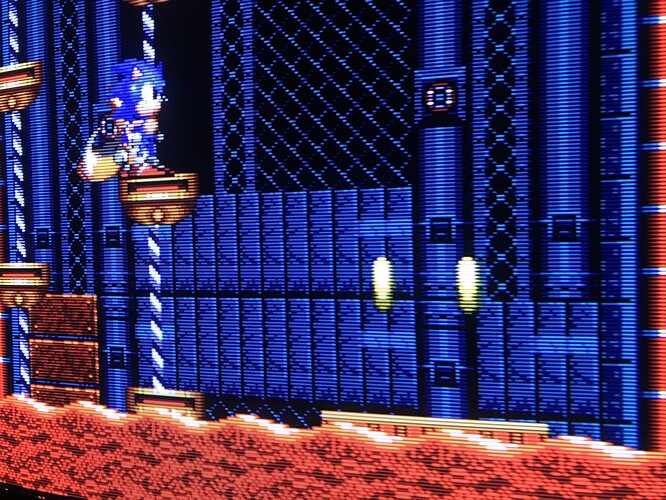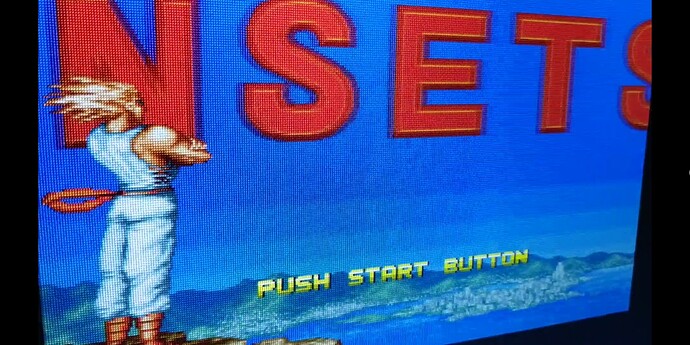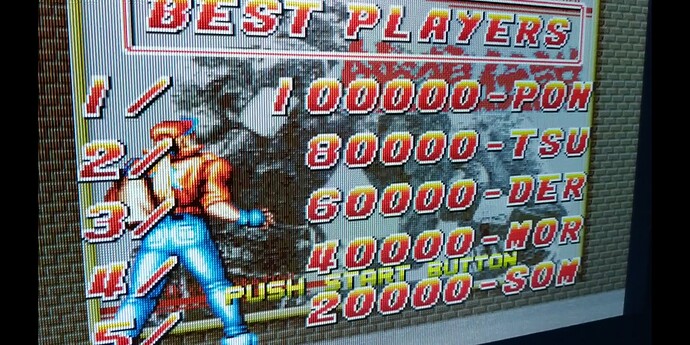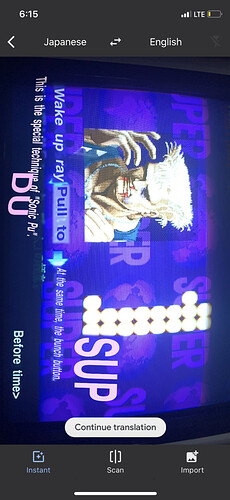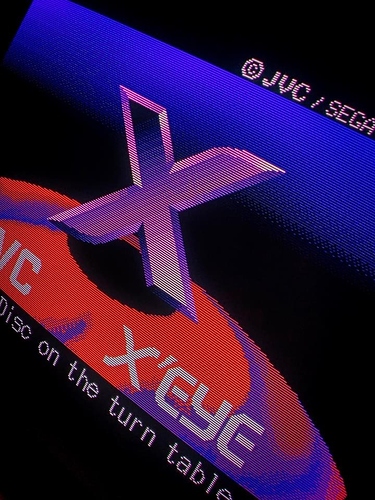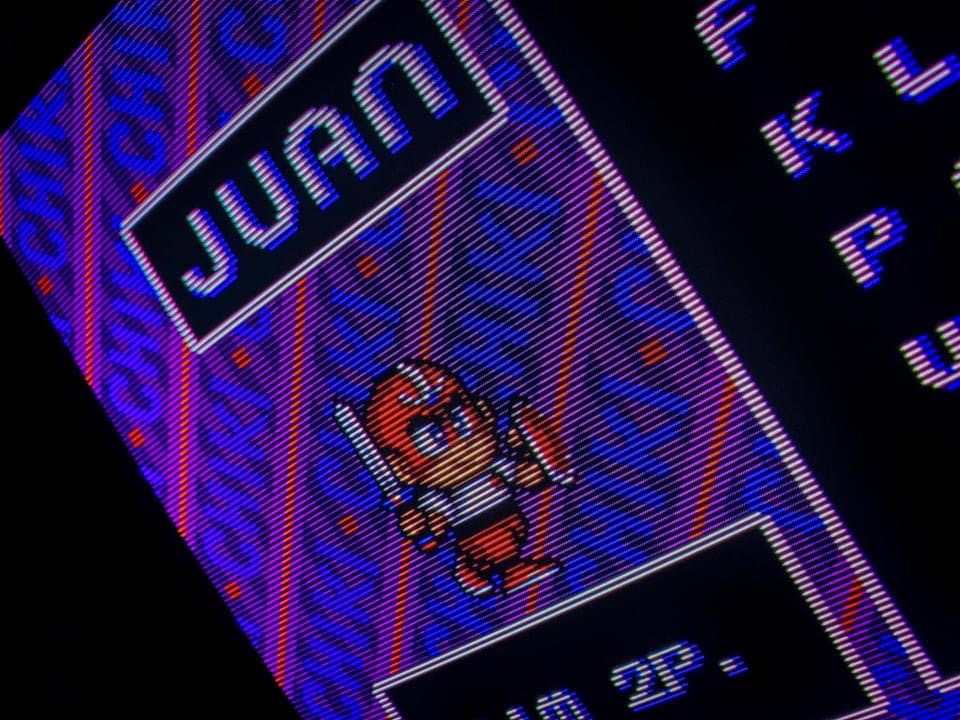Just some Sonic 2 - taking my time with it. I’m using save states in between Acts so I can pick up where I left off whenever the mood strikes.
Thanks!
Playing Garou Densetsu on Neo Geo AES, while drinking some cool pop. Neo Geo AES & OSSC with Hybrid Scanlines.
Those are some of the nicest fake scaliness around. How do they look with 240p polygonal games?
I have not tried yet, but i will test some Saturn or PS1.
I bet it looks great. I’d be interested to see N64 too with that setting if you happen to have one. No worries if not.
I just find the N64 is the hardest of all consoles to “clean up” for an HD screen. But that filter would probably do the trick well.
Harmfull park. Retroarch psx-beetle, 320x240, tv-out-tweaks shader with color adjustment, custom 640x480 scanline overlay @ 30% opacity. Output @640x480 native resolution on my Philips 20PF4121/01 EDTV through DVI.
Hey, good to see you here. Did you figure out how to avoid the image processor triggering vertical banding artifacts?
Yes, turns out I was working under the wrong assumption, it was being created somewhere in the postprocessing shader chain I was using. I rechecked with my samsung display, but that was hooked up through VGA, and in that case the display itself seems to mostly filter out the kind of distortion it was causing. I still see some very minor striping in very small sections under very specific conditions with my current setup, but it could be due to the currenct shader chain, an issue with the panel itself, or the onboard scaler. I would love to investigate further by setting up a jtag/serial connection wih the scaler chip and messing around with its programming/registers, as those are the biggest black box component at the moment, but it seems like kind of a monumental undertaking for something that has now become very minor/trivial at best.
@matt here said that the 20PF4121 has some overscan issues with any signals not coming through the VGA port, I know you’re using DVI here but also exactly 640x480 so maybe it’s not affected. I wonder if matt has also seen this artifact?
There’s two signal processing chips on the chassis used in this model. All analog inputs are tied into the philips chips first and then passes onto the scaler after conversion, but the digital portion of the DVI port is tied directly into the Genesis image processor, it’s set by philips as PC input, and im working under the assumption that they configured the chip in 1-1 passthrough mode for this as it states support for in the datasheet.Outputting a 640x480 testgrid to the display confirms that its 1:1 pixelmapped, with no overscan present.
I’ve been following @gravitone on Reddit - hi! - but I don’t think I’ve seen a photo of the striping issue? If it’s easy to photo please share one.
When I was using this display over component I was using hardware (mostly Wii, and PS2) and have never seen anything I’d describe as vertical banding. I have some old photos I can check if needed.
Since switching to VGA over DVI I’m still mostly using hardware (Wii, PS2, DC, 360). Though I do now use Dolphin, and RetroArch for some occasional things, but I don’t use shaders. But I like the idea of scanlines so I might try that. Let me know if you want me to troubleshoot or try anything specific.
I have this Philips 20PF4121 and also the same Sharp LC20 that @gravitone put me on to. And I have a second Philips 20PFL4122 with a different scaler that cannot do 240p. I think between us we’ve got most of the types of 480p EDTVs covered. 
Did you get your Sharp working with the DC/PS2/Wii in the end, matt?
Best EDTV in your opinion out of the ones you own, matt, Gravitone?
Samsung LW20M21C
Philips 20PF4121
Sharp LC-20S5E
Yes, I ended up piping everything through my Extron DVS304 (DVI) to convert the signals to perfect VGA timings. Not passthrough, but no scaling was added. Using it more as a transcoder.
It worked well, but for me the Philips IPS panel trumped the Sharp panel, particularly for motion blur where the Sharp was 2-3X worse and had dark edges on scrolling high contrast areas (Eizo LCD monitor test).
One thing that got me for a while is that the Sharp looked bad in Windows until I realised it needed ClearType tweaking due to it being BGR subpixel order.
Philips 20PF4121 is the one for me - it has an IPS panel and can do 240p properly.
We’ve recently started trying to find a USA equivalent of the Phillips. More news when we have it!
I’d rate the philips the best of the bunch so far, definitly the least amount of motion blur. Sharp comes in as a good second. I really like the contrast and color balance, and the scart socket properly supports rgb. The samsung has significantly more backlight bleed but has an overal brighter backlight, it does look a bit better then the sharp in a well lit room with colorful titles. Motion blur is objectively slightly worse then the sanyo. All analog inputs except the vga get converted into composite internally before being sent to the image processor causing the usually dot crawl artefacts and desaturated colors.
Cool, will keep an eye out for a Phillips.
Sanyo? Have I missed one?
nope, that was a typo that’s now fixed.
